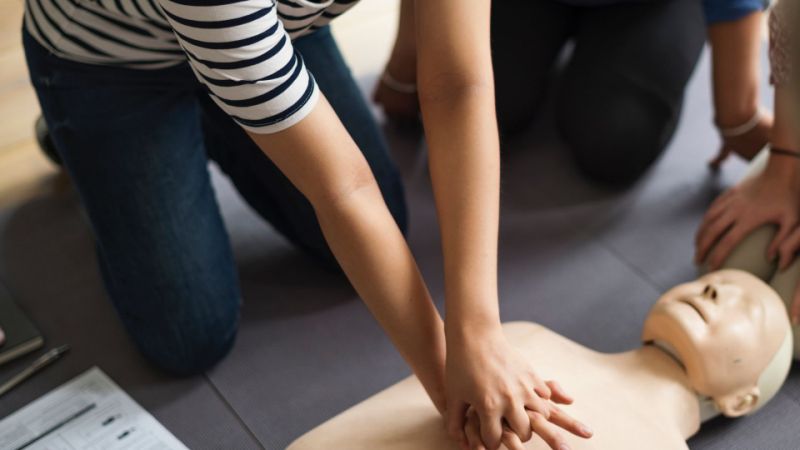World Restart a Heart Day

The 16th of October is kept aside for Restart a Heart Day which is an initiative led by the Resuscitation Council (UK) in partnership with the St John Ambulance, British Red Cross, British Heart Foundation, and Yorkshire Ambulance Service.
The aim? To increase public awareness of cardiac arrests and to increase the number of people surviving "out of hospital" cardiac arrests.
As a little exercise, I decided to ask a few of my colleagues whether they felt confident about giving CPR to someone having a cardiac arrest.
I asked 8 people and 4 of these said that they felt confident. However, only 3 said that they’d actually been on a first aid course. t’s extremely important that we are all aware of how to administer CPR or at least what to do in the situation. f you call ‘999’ then the operator will direct, you to the nearest defibrillator and give you instructions on how to use it.
Six steps to restart a heart
According to the British Heart Foundation Website, if you come across someone who is unconscious and not breathing, the 6 steps below may help you save their life.
Step 1: Shake and Shout
Make sure that the person isn’t conscious. You can do this by gently shaking the shoulder and shouting for help. It’s also important that you do a quick survey for any risks/hazards before you begin.
Step 2: Check if the person is breathing normally – do this for no more than 10 seconds.
If the person is gasping for air that isn’t normal. In this instance, open the airway by tilting the head back and lifting their chin.
Step 3: Call 999 emergency services
If there isn’t anyone else to help, then put your phone on loudspeaker (leaving your hands free) and the operator will talk you through how to perform CPR.
Step 4: Give 30 chest compressions
Start the chest compressions as soon as possible. Place the heel of your hand in the centre of the person's chest with the other hand on top. Interlock the fingers.
Keeping your arms straight, use the heel of your hand to push the breastbone down firmly and smoothly so that the chest is compressed (5-6 cm), and release.
Do this at a rate of 100 to 120 compressions per minute. It’s easier to think of it as 2 per second.
Step 5: Give two rescue breaths
Open the airways, tilt the head back and lift the chin. Pinch the person’s nose. Take a normal breath, make a seal around their mouth and breathe out steadily.
The chest should rise and fall. Take your mouth away and give a second rescue breath. These two breaths should take no longer than five seconds.
Step 6: Repeat until an ambulance arrives
When you call 999, the operator will let you know whether there’s a public access defibrillator nearby.
This is nothing to panic about. The defibrillator kit is easy to use with clear instructions. It will only deliver a shock if needed so you can’t do any harm.
What if I don’t want to give rescue breaths?
There is an option to do hands-only CPR. Using this method all you need to do is push hard and fast on the chest without giving rescue breaths. This will still increase the person’s chance of survival and is much better than doing nothing. Check out the video below.
Hopefully, in this blog, we’ve given a few ways that you could potentially save someone's life. And remember, if we all took the time to learn how to administer CPR then it would cut down the number of unnecessary deaths related to cardiac arrest.
★★★★★
2 years ago
We needed a small part for our SupaScoota. We spoke to a very helpful lady who organised it to be posted out to us, it arrived the following day. It was nice to speak with someone who was so understanding and understood that when you have limited mobility how important a scooter is. Thank you!
Alison S.


